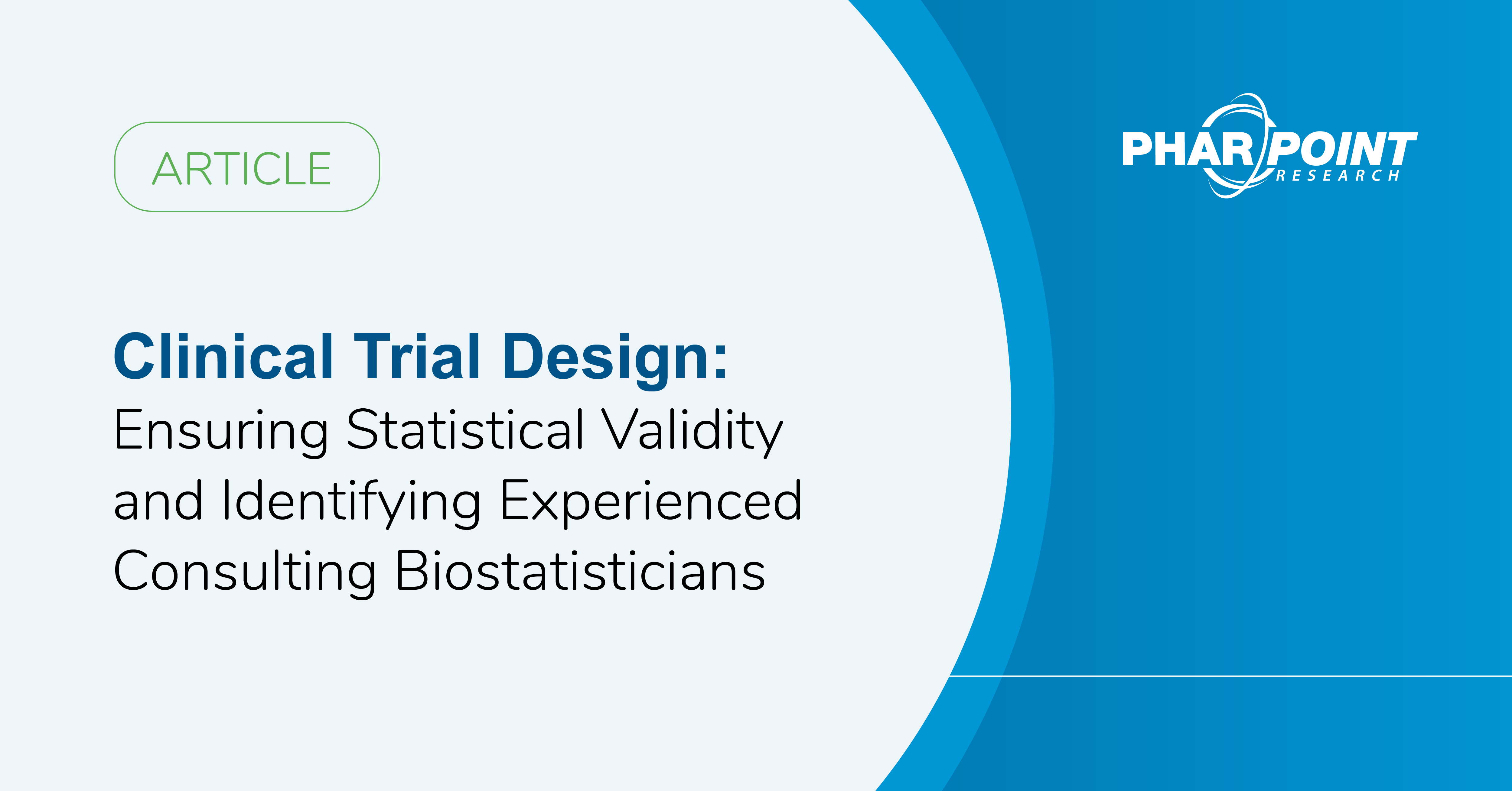How can an experienced biostatistician help sponsors design more effective clinical trials?
Initial insight from a consulting biostatistician at a contract research organization (CRO) can help you build out a strong study framework, ensuring your trial is designed to produce meaningful results.
During study design, a biostatistician may help:
- ensure the statistical appropriateness of study design
- determine endpoint definition
- reduce bias through elements like randomization or inclusion of external review committees
- perform sample size and power calculations
- perform simulations to evaluate potential study design aspects such as number of interim analyses, timing of interim analyses or parallel versus cross over design
- evaluate the use of innovative statistical approaches such as adaptive trial design
What are three qualities to look for in consulting biostatisticians?
Early collaboration with a consulting biostatistician or a top biostatistics CRO can give your team high-quality insight and confidence in an effective, efficient study design.
When identifying the right biostatistical consultant for your study design needs, active listening, an understanding of the science, and an ability to draw on parallel experience are key.
Active listening:
Your study’s biostatistician must be an active listener, working to understand pressure points adequately. In addition to listening to clients, statisticians should be in close communication with clinical colleagues, relying on their therapeutic expertise to better understand study needs and potential obstacles.
Understanding the science:
Potential study challenges and solutions depend on the unique characteristics involved in each trial. Biostatisticians must be able to understand the science behind both an investigative product and the disease that product intends to treat.
For example, a drug’s half-life has important implications for dosing regimen and may make certain study designs ineffective. Similarly, a disease’s trajectory and natural history may make certain designs, such as cross-over, impossible.
Ability to draw on parallel experience:
A savvy, experienced biostatistician can contribute insights from their experience across various therapeutic areas. Finding parallels in adjacent areas can give sponsors further insight into current agency thinking.
This can be especially time-saving for clients working in new or rare research areas, as similar yet different diseases may already have guidance and lessons learned to work from.
Conclusion
Engaging an experienced consulting biostatistician early in the design process can significantly enhance the study’s potential to produce meaningful results. These professionals bring critical insight into the trial design.
Key qualities such as active listening, understanding of the scientific context, and the ability to leverage parallel experiences make a biostatistician invaluable.
Looking for a biostatistics consultant or biometrics CRO team to support your company through study design, management, and analysis?
Learn more about PharPoint’s biostatistics and statistical programming services or contact our business development team for a conversation.
About PharPoint
PharPoint Research is a consultative, client-focused contract research organization that helps innovative Sponsors meet their clinical trial goals. Our team regularly helps clients plan, manage, and analyze efficient and high-quality clinical trials and has supported over 1,000 clinical trials since , and has prepared biostatistics deliveries for 30+ regulatory submissions since 2008.




